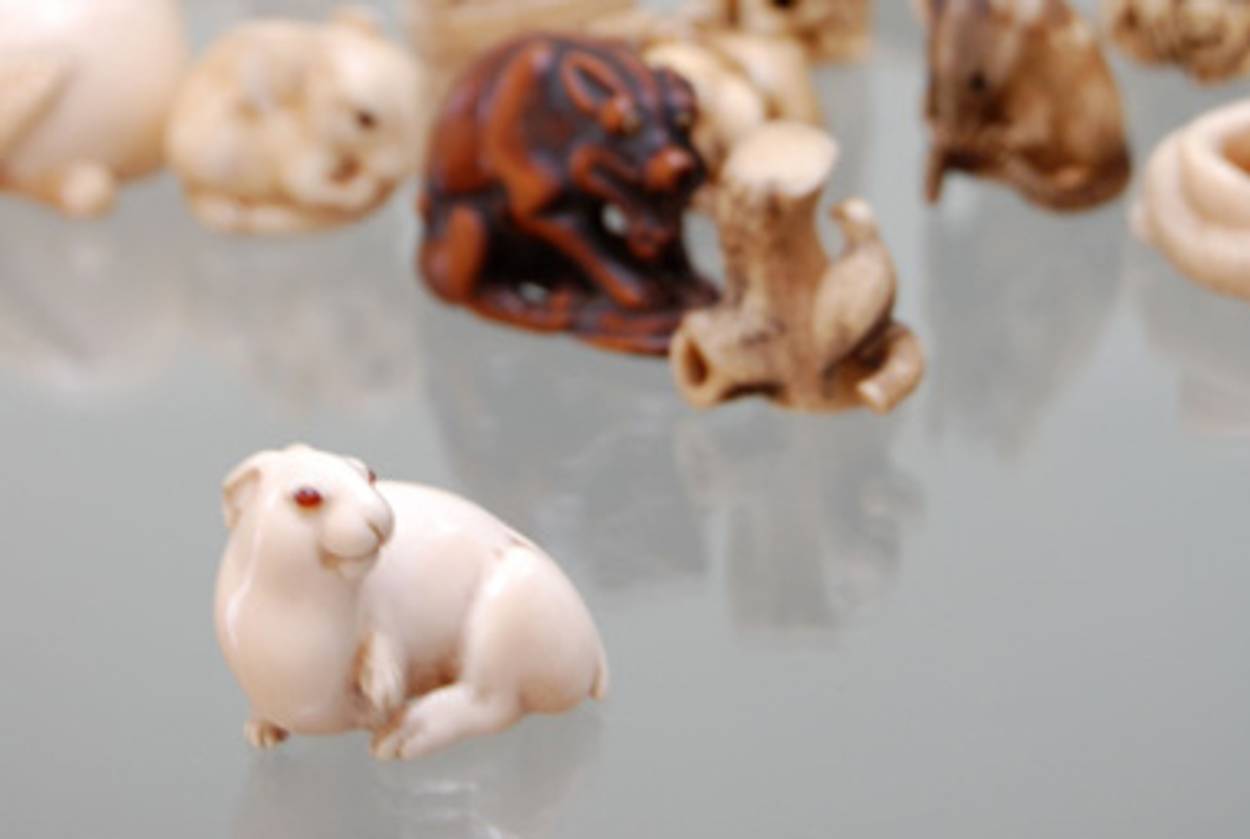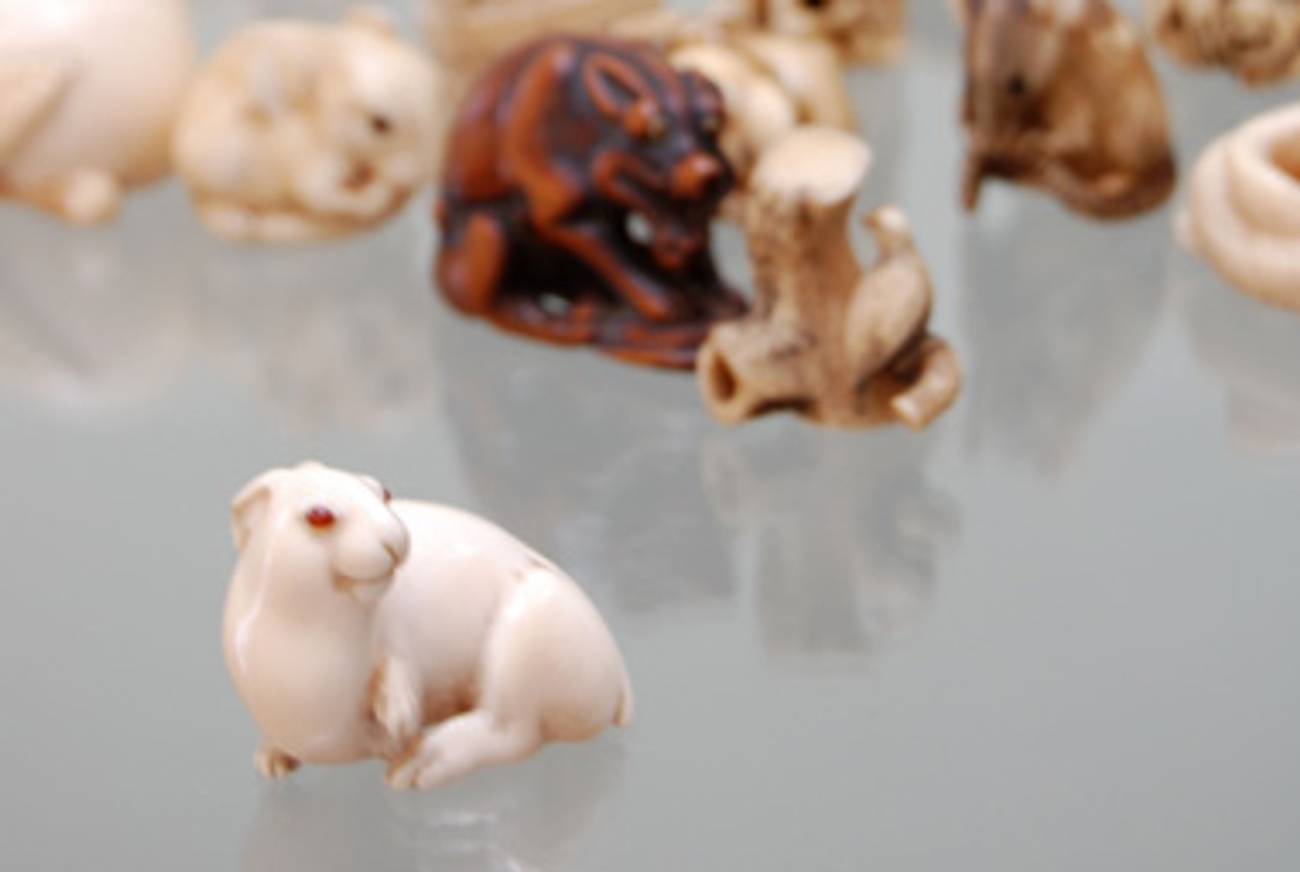Hareloom
A memoir uses a collection of Japanese figurines to offer a glimpse into one of prewar Europe’s leading Jewish families




In 1943, Hannah Arendt reviewed the memoirs of Stefan Zweig, one of the leading literary figures of fin-de-siècle Vienna. Like the vast majority of those figures—the playwrights and journalists, psychoanalysts and art collectors who made the Austro-Hungarian capital perhaps the most sophisticated city in the world—Zweig was Jewish. But this Jewish golden age was always haunted by the pervasive anti-Semitism of Austrian society, and it ended, of course, in catastrophe. In 1938, when Nazi Germany annexed Austria (to the wild enthusiasm of the Viennese), Zweig, like Freud and other Jewish celebrities, had to flee the country. In 1942, in exile in Brazil, he committed suicide. To Arendt, writing during the Holocaust, Zweig’s fate demonstrated the self-deception and futility of the German Jewish pursuit of cultural glory—“the fame that gave the social pariah something like the rights to a homeland in the international elite of the successful.”
In his absorbing new book The Hare With Amber Eyes, Edmund de Waal, a British artist and potter, tells the story of his discovery of his own family’s part in that tragic history. The story begins, oddly enough, with a collection of Japanese figurines—small, lifelike carvings in wood or ivory, known as netsuke. De Waal inherited a trove of 264 of these objects from his great-uncle—a standing warrior, a sleeping servant, rats, a couple making love, three toads on a leaf, and many more, including the titular hare.
As de Waal explains, he found the netsuke to be a challenge as well as a gift: “These objects seemed to induce insatiability, to own you, make demands on you.” One of these demands, for a craftsman like de Waal, was to learn to appreciate the aesthetic vision of the pre-Meiji Japanese craftsmen who made the netsuke. Today, these figurines occupy a fairly low place in the hierarchy of Japanese art. They are seen as toylike, “too deft,” and in Tokyo’s National Museum there is “only a single vitrine of netsuke amongst the chilly halls of ink-painting.” But as de Waal handles and ponders them, he convinces himself—and the reader—that they are more than this. Netsuke is “real sculpture for the hand,” de Waal concludes, and his book demonstrates the way a connoisseur feels his way into an unfamiliar art form:
Some of the netsuke are studies in running movement, so that your fingers move along a surface of uncoiling rope, or spilt water. Others have small congested movements that knot your touch: a girl in a wooden bath, a vortex of clam shells. … They are always asymmetric, I think with pleasure. As with my favorite Japanese tea-bowls, you cannot understand the whole from a part.
The other challenge posed by the netsuke is more complex. “Owning this netsuke—inheriting them all—means I have been handed a responsibility to them and to the people who have owned them,” de Waal writes. The Hare With Amber Eyes is the product of his research into the lives of those former owners, his ancestors. De Waal’s father is an Anglican clergyman, and his father’s father was a Dutch Protestant; but the netsuke came to him from the family of his father’s mother, Elisabeth Ephrussi. And the Ephrussis were one of the great Jewish dynasties of 19th-century Europe—an international clan of merchants and financiers nearly as wealthy as the Rothschilds. In telling the story of the netsuke, then, de Waal finds himself telling one of the dramatic parables of modern Jewish history: the story of the rise, splendor, and dramatic fall of the cosmopolitan, culture-besotted, Jewish haute bourgeoisie.
The Ephrussis came originally from Odessa, the commercial capital of Jewish Russia, where in the mid-19th century Charles Joachim Ephrussia made an enormous fortune in grain-dealing. “The Ephrussis were les Rois de Ble, the Kings of Grain,” de Waal writes, and carved wheat-stalks figured in the décor of their palatial houses. In the 1850s, the patriarch embarked on a strategy of international expansion by sending his sons to different European capitals, as the Rothschilds had done. One branch settled in Paris, where they built the Hotel Ephrussi on the Rue de Monceau, famous at the time as the neighborhood of Jewish nouveaux riches. As usually happened in such families, the younger generation shifted its attention from business to culture—especially Charles Ephrussi, the youngest son, who was not needed in the office. Instead, he became a collector, art historian, and connoisseur of the first rank. He commissioned paintings from Renoir and Manet, gave a job to the young poet Jules Laforgue, and became friends with royalty and aristocracy. His apotheosis came in the work of another friend, Marcel Proust, who used him as one of the models for the Jewish socialite Charles Swann in In Search of Lost Time.
The most important of Charles’ purchases, for de Waal’s purposes at least, was the collection of netsuke, which he picked up at a Paris gallery in the 1870s. This was at the height of the French enthusiasm for japonisme, and de Waal writes very well about both the commercial and the aesthetic sides of this craze: “Japanese things carried an air of eroticized possibility … they were props for dressing up, role playing, the sensuous reimagining of the self.” Appropriately, Charles Ephrussi shared his passion for japonaiserie with his mistress, Louise Cahen d’Anvers, a married woman from another Jewish business dynasty.
Another way of looking at Charles’ collecting, however, is to see it as a version of what Arendt complained about in Zweig. It was a way of using art and culture to force his way into a society that continued to exclude Jews, no matter how wealthy. As de Waal shows, the eruption of the Dreyfus Affair, in the 1890s, left even as well-connected a man as Charles Ephrussi in the cold. Painters like Degas and Cézanne, whom he had once patronized, now turned on him, and children gathered in front of the Hotel Ephrussi to shout taunts at the “sale juif.”
In 1899, Charles Ephrussi sent his collection of netsuke to Vienna, as a wedding present for his cousin Viktor, de Waal’s great-grandfather. As the narrative follows them, de Waal shows great acuity in distinguishing the kind of life the Ephrussis led in Vienna from the one they led in Paris. The Palais Ephrussi was similar to the Hotel Ephrussi—a showcase for new wealth, located on the Ringstrasse, in a rich Jewish neighborhood. But in de Waal’s telling, at least, Viktor Ephrussi lacked Charles’ connoisseurship, and he did not so much collect art as stockpile it. The netsuke joined “an accumulation of stuff from four decades of affluent shopping.” They ended up in the dressing room of Viktor’s young wife, Emmy, where her children would play with them while watching her prepare for balls and parties.
Things were never the same after World War I, when the collapse of the Empire cost the Ephrussis most of their fortune and left Vienna’s Jews increasingly exposed to right-wing violence. The fatal blow came on March 10, 1938, when Hitler annexed the country. Almost immediately, de Waal writes, the Hotel Ephrussi was vandalized by Nazi thugs, then systematically plundered by the Nazi government. The Ephrussi Bank, the source of the family’s fortune, was Aryanized and its name changed. And the Palais Ephrussi was handed over, by an awful irony, to Alfred Rosenberg, the Nazi Party’s chief anti-Semitic ideologue.
Thanks to their wealth and connections, most of the family members managed to escape with their lives, to England or America. And the netsuke, miraculously, were saved too—by the family’s Christian servant, Anna, who stuffed them in her mattress for the duration of the war. They were among the only art objects to be restored to the Ephrussis, and the last part of The Hare With Amber Eyes tells the happy story of their temporary return to Japan, in the custody of de Waal’s uncle Iggy. By this time, however, the netsuke themselves—which are, disappointingly, never actually illustrated in the book—have receded into the background. In this book about people who defined themselves by the objects they owned, de Waal shows that human stories are more powerful than even the greatest works of art.
Adam Kirsch is a poet and literary critic, whose books include The People and the Books: 18 Classics of Jewish Literature.
Adam Kirsch is a poet and literary critic, whose books include The People and the Books: 18 Classics of Jewish Literature.